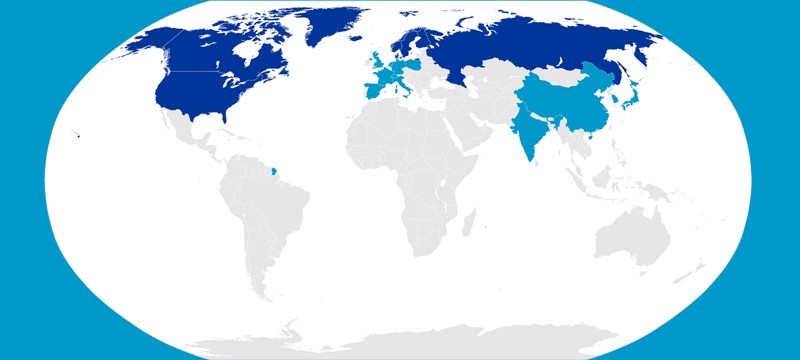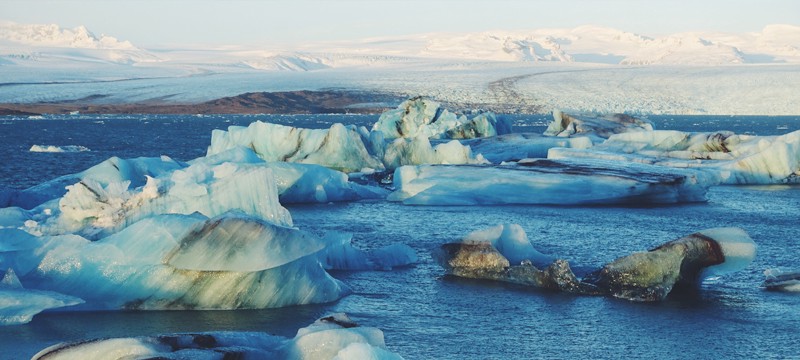Because the ocean is so wide, deep, and dynamic, sometimes it is best to look inside the larger perspective and examine the conditions and challenges of one area that, indeed, might stand for all. One regions that serves, of course, is the Arctic, the full circumpolar Arctic Ocean with all the diverse conditions, resources, and needs that are both specific and generally representative of the many issues faced elsewhere.
First, there is the problem of governance. The Arctic region is divided among eight nations with national claims and jurisdictions that often conflict, overlap, and confuse, much like the larger ocean but at a lesser scale. Efforts have been made to coordinate and resolve interests through a multi-national process in the form of the Arctic Council, a concurrence of nation states with direct claim on Arctic territory augmented by observer nations with self-proclaimed interests. So while China and Brazil have no geographic relationship to their Arctic interest, they do lay claim to a second tier of engagement. A third tier, the Arctic Circle Assembly, is comprised of other political entities, UN agencies, non-governmental organizations, educational and research institutions, environmental groups, for-profit associations, and interested individuals. The Assembly convenes separately to present and debate, support and challenge the more formal machinations of the Council. It is a lively conversation.

The Council leadership passes from one member state to another every two years; the United States held the chair from 2015 to 2017 when it passed the responsibility of chairmanship to Finland. The stated goals are lofty. The US priorities were Arctic Ocean Safety, Security, and Stewardship; Improving Arctic Economic and Living Conditions; and Addressing the Impacts of Climate Change. Truth, of course, is in the details, more specifically in the research goals, actual implementation, and financial commitments. During its two year tenure, the US expressed ambitious intent. But as with so many issues these were impeded by climate politics, budget cuts, and indifference to a problem and place out of mind; as a result, its successes were limited. Much was to be invested in observation and research to confront identified problems of acidification, black carbon, biodiversity, meteorological forecasting, the melting of sea ice, long-term observations, health problems and delivery, air quality, water and sanitation, renewable energy, transportation, ship safety and operations, renewable energy, communications, and social matters, such as secondary education, high unemployment, domestic violence and suicide rates. If there was progress, it was incremental. The continuity of programs already in place, task force and research team meetings, simulations and models reports and recommendations were all labeled with acronyms and published in academic journals and government brochures with the high gloss of success and little substance.
That may seem harsh, and I do not mean to dismiss the detailed work on single issues that was surely done. But the apparatus was in full function, an elaborate mechanism for incremental collection of data, refined recommendation, academic advancement, and some good things that found their way as practical application in some few places where most needed.
The total population of the Arctic region is estimated at 5 million persons, about 500,000 are indigenous peoples living in remote places, sustaining their lives through traditional practice, keeping their languages and cultural traditions, and very specifically, often desperately, surviving at the very end of the governance, policy, and financial pipeline. As the US has not a particularly good record dealing with its own indigenous population, it was not surprising that its agenda was short on accomplishment in that regard.

Jokulsarlon, Iceland. Courtesy of Dion Tavenier for Unsplash
During the two years of the US chairmanship two critical, inter-related global problems were up for debate: the demand for fossil fuels and the negative consequences of that demand as expressed in changing climate. The US was consumed by the political reality of that situation, embodied in an election, and while government attempted to move forward, signing the Paris Climate Agreement and implementing environmental regulation by Executive Order, the underlying premises and demands of the energy sector — oil and gas, plastics, and industrial agriculture — presented an insidious political counter-force against any real advancement of something so minor as the intention of the American Arctic agenda.
This condition remains, even aggravated by the declared policies of the new US Administration. Interest and funding would seem to be little or nothing. Indeed, no new official US Arctic envoy and participant in the Arctic Council has been nominated, and may not be, as a complete abandonment of official American engagement in the region seems likely.
But the issue will not go away, in the Arctic or in the many other places on earth where these same problems exist and must be addressed. If we are indifferent to the Arctic, we are indifferent to all of them, even to the ones in our own backyard.
- - -



